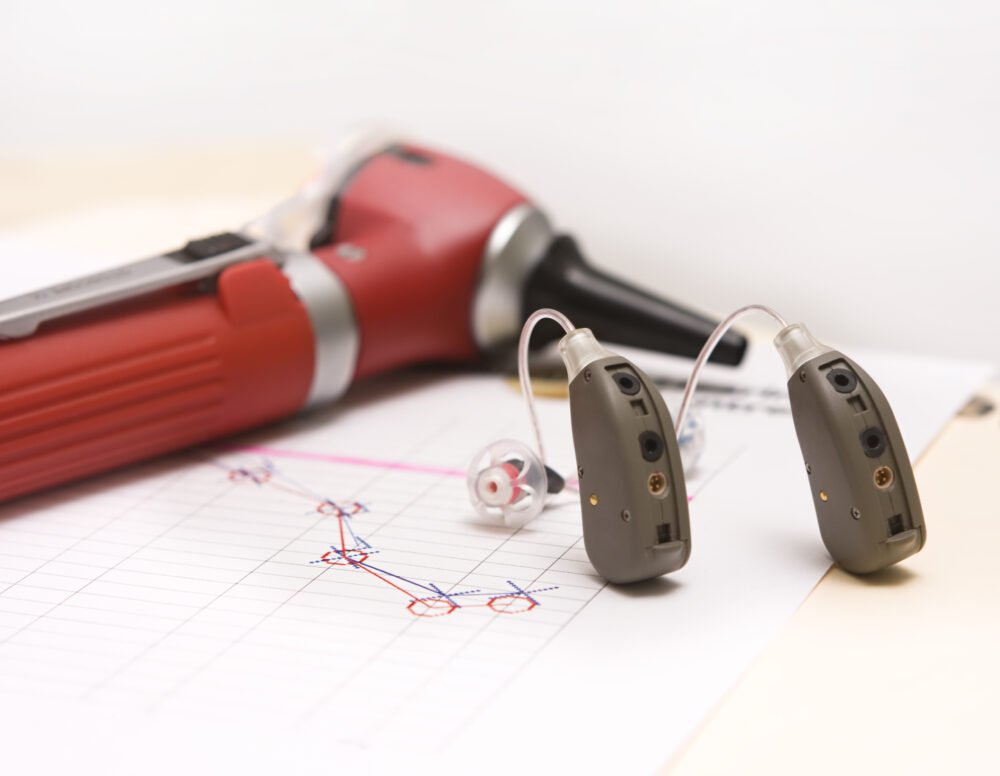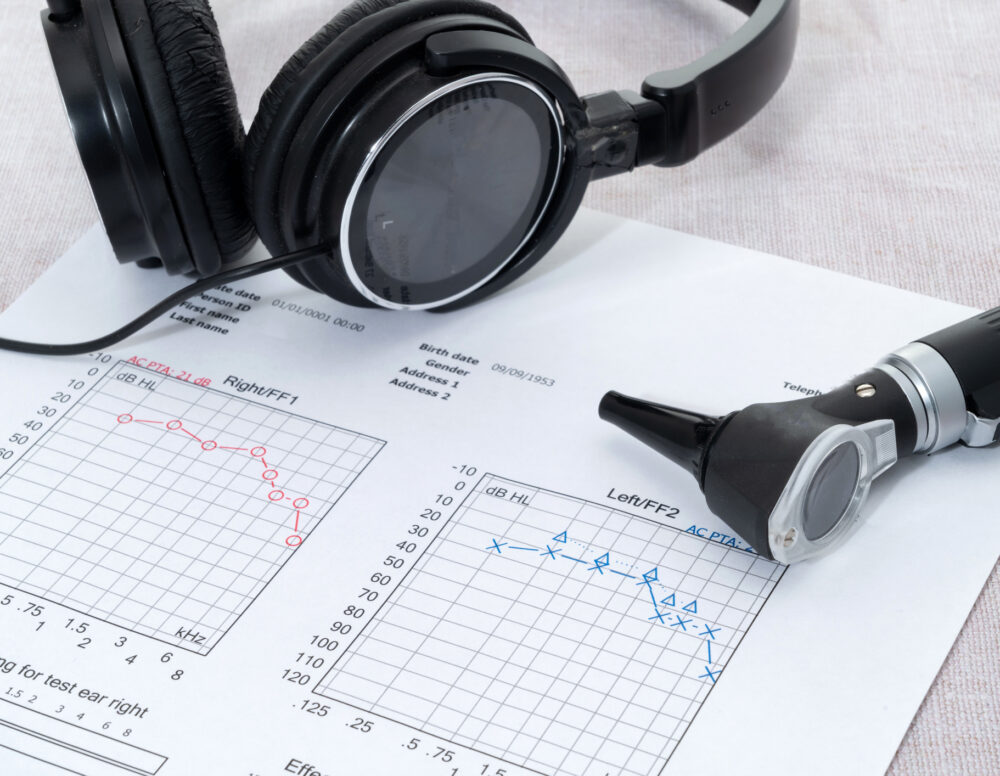Three steps to hearing success
At Sensitive Hearing, we specialise in hearing care and rehabilitation. We provide in-depth clinical hearing tests for the assessment of hearing loss.
Tailored hearing tests
Types of hearing tests
Pure Tone Hearing Test Oxford
Pure tone hearing tests are fundamental evaluations used to assess an individual’s hearing sensitivity across a range of frequencies.
During the test, you wear headphones and listens for faint tones at different pitches presented at varying volumes. By indicating when you can hear each tone, our audiologists can create an audiogram, a visual representation of your hearing thresholds. This comprehensive assessment helps identify the type, degree, and configuration of any hearing loss present.
Pure tone testing is essential for diagnosing hearing impairments, determining candidacy for hearing aids or other interventions, and monitoring changes in hearing over time through follow-up evaluations. These tests are pivotal in providing personalised care and optimising the management of auditory health for you.
Real Ear Measurement Tests Oxford
Real ear measurement (REM) tests are advanced procedures used to fine-tune hearing aids to your unique ear and hearing characteristics.
During the test, a tiny microphone is placed in the ear canal, and the hearing aid is worn as usual. The audiologist then measures the sound output of the hearing aid in real-time, assessing how well it matches the individual’s hearing prescription and comfort levels.
REM tests ensure that the hearing aids are delivering the appropriate amplification at each frequency, optimising speech clarity and overall sound quality. By providing precise adjustments tailored to the individual’s needs, REM tests enhance the effectiveness and satisfaction of hearing aid usage.
These tests are integral in achieving optimal hearing aid performance and improving your communication abilities and quality of life.
Bone Conduction Hearing Tests
Bone conduction ear tests are specialised assessments used to evaluate hearing by bypassing the outer and middle ear and delivering sound vibrations directly to the inner ear via bone conduction.
During the test, a bone conduction transducer is placed on the mastoid bone behind the ear or on the forehead, and tones or speech stimuli are presented. By measuring the individual’s response to these stimuli, audiologists can assess the function of the inner ear and auditory nerve pathways.
Bone conduction tests are particularly useful for diagnosing conductive hearing loss, sensorineural hearing loss, and differentiating between the two. They play a crucial role in determining the type and degree of hearing loss and guiding appropriate treatment strategies, including the recommendation for hearing aids, surgical interventions, or other rehabilitative options.
These tests provide valuable insights into the overall functioning of the auditory system and help audiologists tailor interventions to address specific hearing needs effectively.
Cortical Evoked Response Audiometry (CERA)
Cortical Evoked Response Audiometry (CERA) is an objective hearing assessment method that records signals from the auditory cortex of the brain in response to sound stimuli presented to the ears. This test provides valuable information regarding the threshold of sound required to elicit a response and verifies the functionality of the auditory cortex, which cannot be obtained through standard hearing evaluations.
A CERA appointment typically lasts around two hours, during which you are encouraged to bring a book to promote relaxation. Electrodes are placed behind the ears and on the head, connected to a computer system. A series of tones at varying intensity levels are then delivered to elicit responses for analysis.
CERA tests are conducted for various purposes, including assessments for ENT Consultants, Solicitors, and Medico-Legal agencies, offering detailed insights into auditory processing and cortical responses to sound stimuli.
Testimonals
'Quickly help if you have a problem... good customer service'
Always there to quickly help if you have a problem with your hearing aids. I find it difficult to change the wax guards on the aids but with a call to Sensitive Hearing I had an appointment next day to sort it. That's good customer service. Totally recommend Sensitive Hearing.
-John, Oxford Customer
We're approved & apart of

Hearing Aids: Frequently Asked Questions
What is the difference between a hearing screening and a hearing evaluation?
A hearing screening is a quick assessment used to determine if further evaluation is necessary. It typically involves simple tests to check for the presence of hearing loss. In contrast, a hearing evaluation is a comprehensive assessment conducted by an audiologist to diagnose the type and severity of hearing loss, its causes, and potential treatment options.
How often should I have my hearing tested?
It is recommended to have a baseline hearing test in adulthood and regular follow-ups as needed based on individual risk factors, such as age, noise exposure, and medical history. Generally, adults should consider having their hearing tested every 3-5 years, while individuals with known hearing loss or other risk factors may require more frequent evaluations.
What should I expect during a hearing test?
A typical hearing test involves several components, including a review of medical history, otoscopy (inspection of the ears), pure-tone audiometry (listening for tones at different frequencies), speech audiometry (evaluating speech understanding), and additional tests as needed. The audiologist will explain each step of the process and answer any questions to ensure your comfort and understanding throughout the evaluation.
What happens if my hearing test shows I have hearing loss?
If your hearing test reveals hearing loss, the audiologist will discuss the results with you and recommend appropriate next steps. This may include further evaluation to determine the cause and severity of the hearing loss, counselling on hearing conservation strategies, and recommendations for hearing aids or other assistive devices to improve communication.
Are there any risks or discomfort associated with hearing tests?
Hearing tests are generally safe and non-invasive, with minimal discomfort. However, some individuals may experience mild discomfort or sensitivity to loud sounds during certain parts of the evaluation. It's important to communicate any concerns or discomfort to the audiologist, who can adjust the testing procedure as needed to ensure your comfort and well-being.
What are the benefits of microsuction ear wax removal?
The Pitfalls of DIY Ear Cleaning: Why Your Ears Deserve Professional Care Ear cleaning might seem like a straightforward job,…
+ Read MoreWhat are the benefits of microsuction ear wax removal?
As a hearing care professional with over 35 years of experience based in beautiful Oxfordshire, I have had the privilege…
+ Read MoreThe benefits of wearing hearing aids
Hearing loss is a common condition that affects millions of people worldwide. While it can occur at any age, it…
+ Read More







